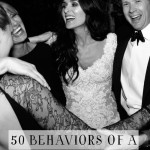On Sunday, like many other people, I went to see “50 Shades of Grey.” Over Valentine’s weekend, the film made over $90 million, a box office record for the opening weekend. I have to admit, I never read the books, didn’t know much about the plot, and tried to avoid all reviews and opinion pieces. I was a blank slate and interested to see what all of the hype was about.
Part of me was hoping the movie did away with the romance novel triteness of the book and gave the subject matter more serious consideration. And another part of me hoped the film would open people’s minds to the possibility that BDSM is a legitimate practice when handled responsibly.
Sexuality is a difficult and touchy subject. For someone like me, growing up in a religious household in the South, I didn’t feel excitement or arousal the first time I kissed a boy. I felt shame. I kept playing it over and over in my mind, and it horrified me. I dreaded the thought of my parents finding out. I thought God was judging me. And that was just a kiss! I’ve come a long way since then, but I can’t imagine how difficult it would be for a person to realize their desires were outside of the perceived norm. If they needed to submit to another person in order to reach sexual satisfaction, or if they needed to dominate another person in order to reach sexual satisfaction, how would they even know how to talk about it? Much less get what they wanted and needed?
So yes, I hoped the filmmakers (and author for that matter) had done their research and understood what BDSM is truly about—trust, full consent, sexual enjoyment, and most importantly, communication.
I say this with utmost disappointment: The film portrayed none of those things.
In fact, it was the complete antithesis. What was disguised as a sexy, provocative, and progressive relationship was actually a manipulative, controlling, and abusive one. If we read the National Network to End Domestic Violence’s list of red flags of abuse, we can spot several behaviors that indicate abusive relationship dynamics in the film.
Note: There are spoilers ahead.
Moves Too Quickly into a Relationship
After knowing Ana for less than three weeks, Christian wants her to move into his house in Seattle on his terms. He requires her to sign a nondisclosure agreement only days after they meet. And lastly, he pressures Ana to sign a BDSM contract detailing their relationship. He tells her to take her time, but spends the next few weeks checking up on her and expressing his impatience.
For me personally, a contract or “written consent” is not valid in a sexual relationship. Consent is a continual negotiation, both verbal and nonverbal. Either party has the freedom to change their mind at any point about any aspect of the relationship and about their willingness to engage in any sexual act.
Does Not Honor Boundaries
The first notable scene is when Ana and her roommate Kate are at a bar celebrating the end of finals. She drunk dials Christian, and he takes it upon himself to come and get her.
In the next scene, she wakes up in his hotel room. He had undressed her the night before and slept next to her while she was unconscious. He could have made healthier choices, but instead he took her to his hotel room, placing her outside of her comfort zone.
Later in the film, Ana sends him a text message saying, “It was nice knowing you.” Christian correctly interprets it as a dismissal, and proceeds to break into her new apartment with wine and a glass of ice to seduce her. Ana appears shocked and clearly uncomfortable.
Later, confused about her feelings, Ana takes a trip to Georgia to visit her mother. Christian shows up unannounced and whisks her away rather than giving her the space and freedom to enjoy the visit with her mother. It’s supposed to appear romantic and dashing in the film because Christian has an absurd amount of resources to entice Ana, but in truth this is an isolation tactic abusers use to separate victims from their support system of friends and family.
The only person who questions Christian Grey’s actions is Kate. She’s surprised when he sends Ana an expensive laptop to replace her broken one. She warns Ana to be careful. Then, Kate notices Ana’s new car keys, and she proceeds to tell her to take it slowly. After Ana leaves the room to avoid the conversation, we hardly see Kate after this.
Is Excessively Jealous
Jealousy is a reflection of someone’s insecurities and mistrust. Aggression and possessiveness do not equate to love, though the film tried to portray these behaviors as such.
For instance, Christian notes that one of Ana’s friends looks at her like he wants her. Then later, when that same friend tries to kiss her, Christian barges in and yells at the guy, shoving him away. This wasn’t a manly moment. Instead, it made me uncomfortable as a viewer. I would’ve been embarrassed and angry if a new love interest had done this to one of my longtime friends.
Seems “Too Good to Be True”
In the few weeks that they’ve known each other, Christian sends Ana expensive gifts. Each time, she refuses to accept them, but he won’t take no for an answer. He constantly whisks her away in helicopters, planes, and expensive cars.
And he knows exactly what to say each time to convince Ana that he likes her more than his other submissives. She should feel special that he’s never slept through the night with anyone, never gone on a date with anyone, and never let any woman touch him. These “allowances” he makes for her aren’t privileges. They’re healthy and normal behaviors in a relationship.
After I watched the film, I began reading reviews and analytical pieces. From all that I’ve read, it appears as if the relationship between Ana and Christian will grow unhealthier throughout the next two parts of the series. Like most abusive relationships, he will begin isolating her from friends and family, and she will continue to avoid questions about their relationship. She will eventually alter her identity as per Christian’s requirements. These are all characteristics of abusive relationship dynamics.
For me, the last scene in the film was particularly hard to watch, not because he was spanking her as hard as he could with a leather belt, but because Ana was not enjoying it. She was crying, and it wasn’t a joyous type of emotional release that some would come to expect from mind-blowing sex or foreplay. Rather, she recoils from his touch and hates what he’s done to her. Read this write-up from Salon for further details about why this spanking scene is fraught with dangerous, irresponsible behavior.
Not only did “50 Shades of Grey” do a horrible job at depicting a healthy relationship between two consenting adults, but as friends of the BDSM community have told me, it did a huge disservice to their practice in general. I realize that filmmakers aren’t too threatened by my opinions, especially after breaking several box office records this weekend, but I hope (I use this word loosely now) that this film at least opens up productive conversations about the differences between healthy, unhealthy, and abusive relationship dynamics.
If you’ve seen the film or read the books, I’d love to know your thoughts!






